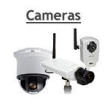
|
|
|
iCatcher Help
Learn how to set up and use iCatcher's features to their full potential. read more... File download areaDownload all the iCatcher software products, including legacy versions. read more... Wildlife picture galleryi-Catcher Wildlife captures fantastic scenes from nature. Have a look at some of the best. read more... Capture equipmentFind out about suitable equipment for use with iCatcher, from cameras to lighting, and more. read more... |
Configuring recording The Recording tab allows you to control the recording of footage Recording
There are also two options regarding storage in the feed settings. If enabled, a separate storage path can be configured independent of the system storage path. This can be used on large systems to spread the recordings across multiple disks. The single file recording mode uses a recording file format where a single video file is used to hold the recordings rather than one JPEG file per frame. This reduces load on the hard disk and increases recording performance and reliability. Pre- and Post-Event recordingPre- and Post-event recording allow you to capture the footage before and after an event even though it may not have been tagged as motion. In this way you could, for example, review the footage for 15 seconds before and after motion was detected Heartbeat framesEnabling this will periodically save as single frame to disk regardless of whether motion has occurred. This is useful when there are prolonged periods of no motion, and you'd like to be able to confirm this. Heartbeat recording can also be used to create a timelapse camera when motion recording and pre and post event recording is disabled. |
